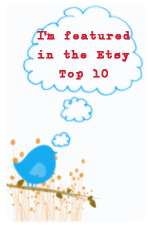I have always loved to garden. But after buying our first house in
Richmond,CA I have become (dare I say
it) obsessed with gardening. Living in
Northern California with our Mediterranean climate means a lot of time
outdoors. So it makes sense to create
attractive outdoor spaces. But once that
dirt was my own…look out! I was a woman
with a mission. And that mission was to
grow as much food as possible. One might
attribute that to my inner homesteader, my love of cooking and preserving, the
local food movement or my proximity to Bezerkley. Regardless it stuck.
My first challenge was to hear the secret inner call of my own personal yard. To say that Northern California weather varies by area is a huge understatement. The temps often vary 30+ degrees between the coast and inland. Taking in the huge number of other factors that can affect the garden such as fog, wind, slope, drainage, clay and you realize… we are not in Kansas anymore. Not to say gardening in Kansas is easy, but the sheer variations and possibilities of the Northern California Landscape demanded I up my game.
In this ever progressing journey I’ve learned a few tricks
or “hacks” as I like to call them.
Hearing the Inner call of the Garden:
In order to discover what will thrive in your garden, you
need to experiment and observe. My first
rule of thumb is to spend some time EVERY day in the garden getting in tune
with what is going on. You will discover
such things as where the sun rises and falls and how that changes over the
year, what thrives, what weeds are invasive, are there snails, butterflies, gophers, does
your soil hold water among other things.
As you are observing, it is worth recording and organizing
your observations. This way you can
experiment with new things and find what works in your garden
Organizing Hacks
Below are some the tricks I use
Garden Journal: I highly recommend keeping a garden journal. Moleskin
puts out a dedicated garden journal but obviously any notebook would work just
as well. My journal is mostly a diary with entries by
date. This particularly helps me
remember optimal times to plant seeds.
If you are more of a graphic person you could use drawings or
graphs. The key is to document what
works and what doesn’t. I always think
I’ll remember exactly when I planted or what or the Latin name is of that
particular plant that did so well, but invariably I don’t. This leads me to another hack;
Saving Plant tags: When I plant a seedling from a nursery, I always put the original plant tag in with
the plant. This is especially true with
plants I’ve never grown before. I’m
terrible with names and by the time I’m journaling that a plant is a winner I’ve
most likely forgotten what it was. When
I find a winner, I usually put the tag in a pouch in my journal. That way I have a library of things that work
in my garden.
Seed Organizer: Seeds are one of the best ways to experiment in
my opinion. It is easier to risk total
failure if you have only invested is $3 in seeds. Note that seeds seem to accumulate. This is why you will need some way to store
them. I use a plastic bin with a
top. The seeds are sorted alphabetically
using index card dividers. I put the
seed packs in Ziploc bags and label them with a Sharpie. The waterproof box and bags protect against
moisture, if I happen to leave the box out in the rain or within sprinklers
distance by mistake. I find looking
through the organizer is a great way to brainstorm what to plant next. This also helps if you do any bulk ordering
of seeds, you can sit down in one place and see what needs re-ordering.
Plant Markers for
seeds: It’s hard to keep track of what seeds were planted where and
when. For this I use popcicle sticks as
plant markers. I have a huge pack of
blank ones from the dollar store. When I
plant something, I write the plant name and the date I planted. This helps when you are journaling to
calculate germination time etc.
Storing all those
organizational Tools: All the above
tools only work if you use them. My garden is at the base of a big hill. I realized I wasn’t using the journal or the
plant markers because I’d forget them in the house at the top of the hill. My solution was to install an old mailbox on
our fence. It keeps everything dry and
in one place. In it I keep; my journal and a pen, clippers, sharpie,
popcicle sticks, twine and a trowel.
I hope these were useful
Happy Gardening!













DLTC Equipment is your one stop shop for all things commercial equipment. We sell commercial landscape and turf equipment, light towers and generators, concrete and compaction equipment We have both used and new inventory, check out our website to see what's available! We sell bulk materials such as sand, mulch, salt, trap rock, top soil, and stone dust.
ReplyDeleteWe also rent equipment such as commercial landscape and turf equipment, trailers, concrete equipment, generators and power tools, earth moving and forestry equipment.
DLTC Equipment is here for all of your equipment needs which is why we offer service and maintenance options as well. Our trained mechanics can handle anything from basic maintenance needs to major repairs. Give us a call today.
Link for details: generators for sale Connecticut